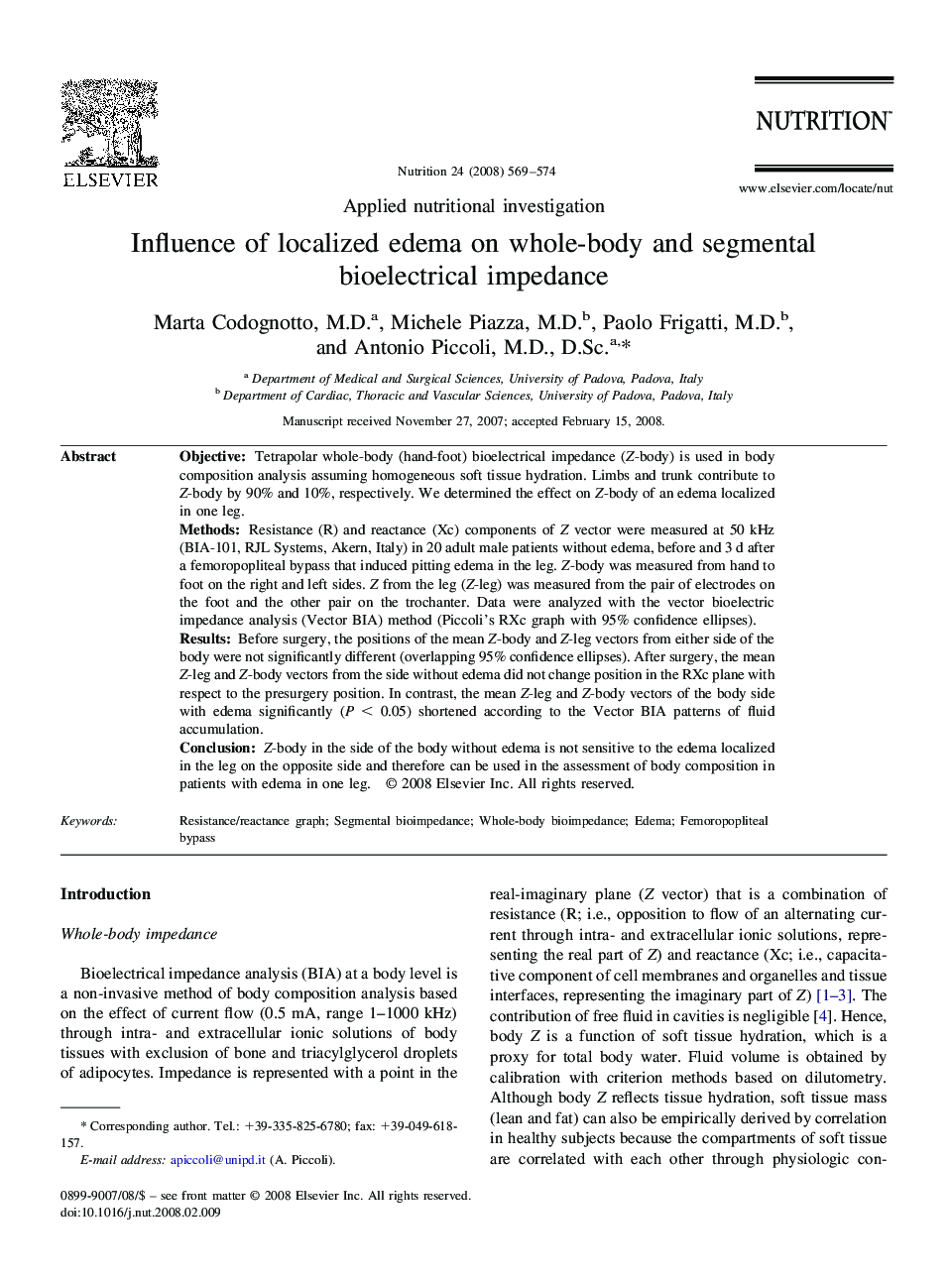| Article ID | Journal | Published Year | Pages | File Type |
|---|---|---|---|---|
| 3277424 | Nutrition | 2008 | 6 Pages |
ObjectiveTetrapolar whole-body (hand-foot) bioelectrical impedance (Z-body) is used in body composition analysis assuming homogeneous soft tissue hydration. Limbs and trunk contribute to Z-body by 90% and 10%, respectively. We determined the effect on Z-body of an edema localized in one leg.MethodsResistance (R) and reactance (Xc) components of Z vector were measured at 50 kHz (BIA-101, RJL Systems, Akern, Italy) in 20 adult male patients without edema, before and 3 d after a femoropopliteal bypass that induced pitting edema in the leg. Z-body was measured from hand to foot on the right and left sides. Z from the leg (Z-leg) was measured from the pair of electrodes on the foot and the other pair on the trochanter. Data were analyzed with the vector bioelectric impedance analysis (Vector BIA) method (Piccoli's RXc graph with 95% confidence ellipses).ResultsBefore surgery, the positions of the mean Z-body and Z-leg vectors from either side of the body were not significantly different (overlapping 95% confidence ellipses). After surgery, the mean Z-leg and Z-body vectors from the side without edema did not change position in the RXc plane with respect to the presurgery position. In contrast, the mean Z-leg and Z-body vectors of the body side with edema significantly (P < 0.05) shortened according to the Vector BIA patterns of fluid accumulation.ConclusionZ-body in the side of the body without edema is not sensitive to the edema localized in the leg on the opposite side and therefore can be used in the assessment of body composition in patients with edema in one leg.
